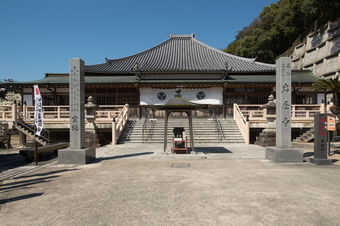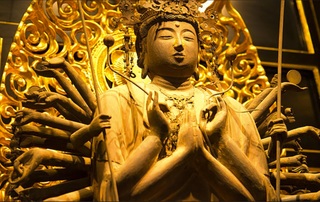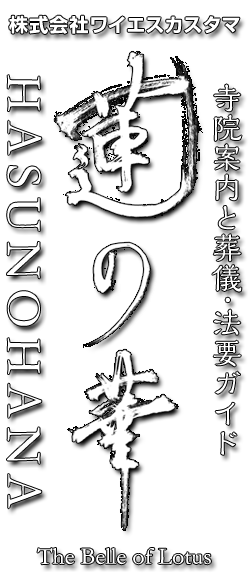History of Iwayaji
Foundation
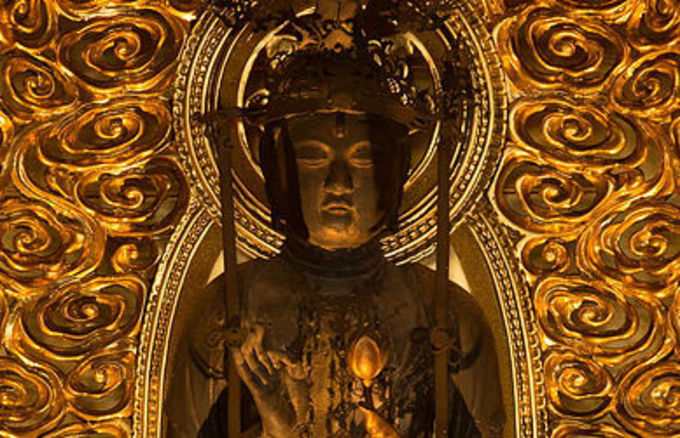
In 715, when Empress Gensho who was the daughter of Prince Kusakabe and Empress Genmei (Ahenohimemiko) acceded to the throne, Oshikoji Chunagon Sanenao was dispatched from the capital to take place the ceremony to consecrate Shokannon under the guidance of Gyoki-Bosatsu, who was devoted to the construction of Todaiji and became the first Daisojo in Japan later. This is said to be the foundation. There is a record that Todogaranjunikabo, Daimon, Romon and Tahoto were constructed at that time and they were majestic.
Visit of Kobo-Daishi
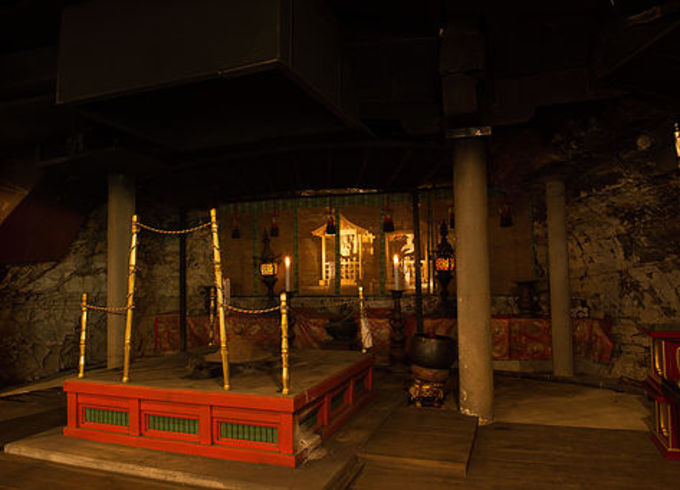
Kobo-Daishi dropped here in 808, over three years since returning from the country of Tang in 805, and liked the holy land of the rock in a grassy basin. After he founded Kongobuji in Koyasan, saying "It is my holy ground of Gutsu*", he once again traveled around the country, and on his way he carried out Goma training for a hundred days. When he finished his training he is said to have made Senju-Kannnon of 5.454 cm with Goma's ash and placed it in Goko of Shokannon, opened by Gyoki-Bosatu. This is Okunoin-Honzon (now this is set in the main hall). This was an event in April 831.
*Gutsu: spreading Buddhism
Visit of Shinran-Shonin
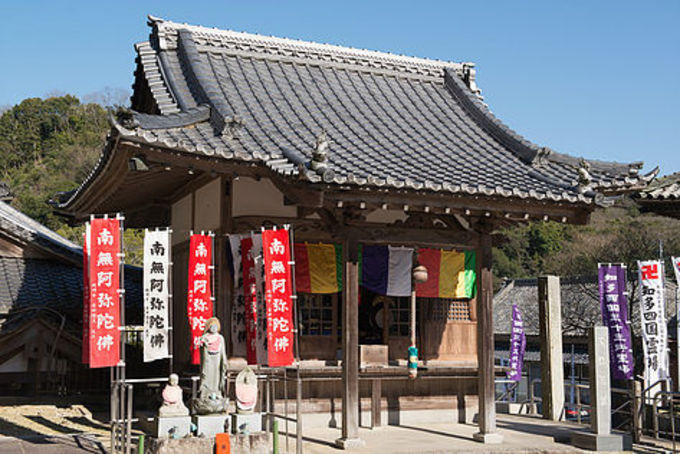
In 1159, Minamoto no Yoshitomo, the father of Minamoto no Yoritomo who found the Kamakura shogunate later, arrived here after being defeated in the Heiji Rebellion. The following year, he was betrayed by Shoji Osada Tadamune who was hiding him, and died (Yoshitomo was buried in the land of Noma and is now enshrined in Noma-Daibo's premises). After a while, Shinran-Shonin, the founder of Jodo Shinshu, heard that the tomb of Yoshitomo is in Noma during the staying at Mikawanokuni-Yanagido (present Yahagi Town, Okazaki-shi, Aichi Prefecture), when he propagated to the Kanto and Tohoku regions, and stopped there. When he visited the mausoleum of Yoshitomo he heard the history of our Kannnon and visited here for worship. At that time he was impressed and wrote himself the Amida-Nyorai's Pride by saying "And I will make my disciples go on a pilgrimage to this sacred place". This is the current main hall of Amidado.
Arrival of Kankai-Daishi
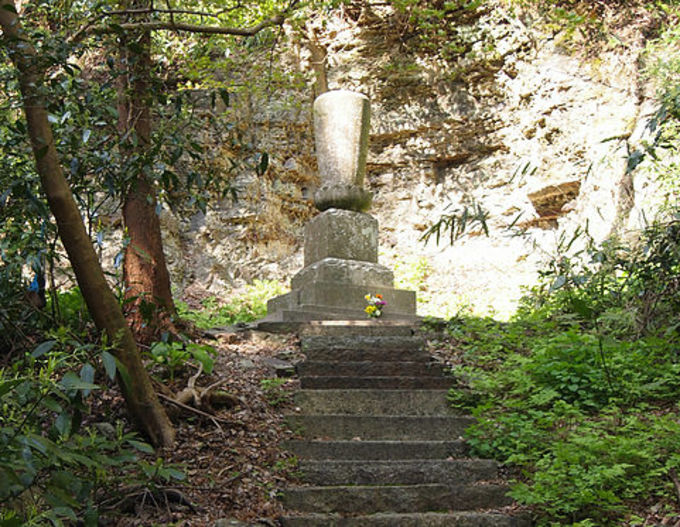
In 1819, Kankai-Daishi (Gocho-Risshi), a master priest of the Edo period, received a request from the Owari lord Tokuwawa Naritomo and moved to here.
Iwayaji was originally founded as Chokuganji of Empress Gensho and got Goshuin, Todogaranjunikabo and others prospered but in each year of Eikyo (1429 to 1441), Eisei (1504 to 1521), and Keicho (1596 to 1615) Karan which was extremely beautiful also fell into a state of crisis due to military disasters and decreasing and releasing of priest monks.
Kankai-Daishi asked for assistance from the Owari lord and repaired the main hall and cared the temple treasure. At this time Iwayaji became the Owari lord 's Kiganjo and was allowed the emblem of Mitsuba-aoi. And he is the originator of restoration of Iwayaji.
Immigration to Australian Iron Temple
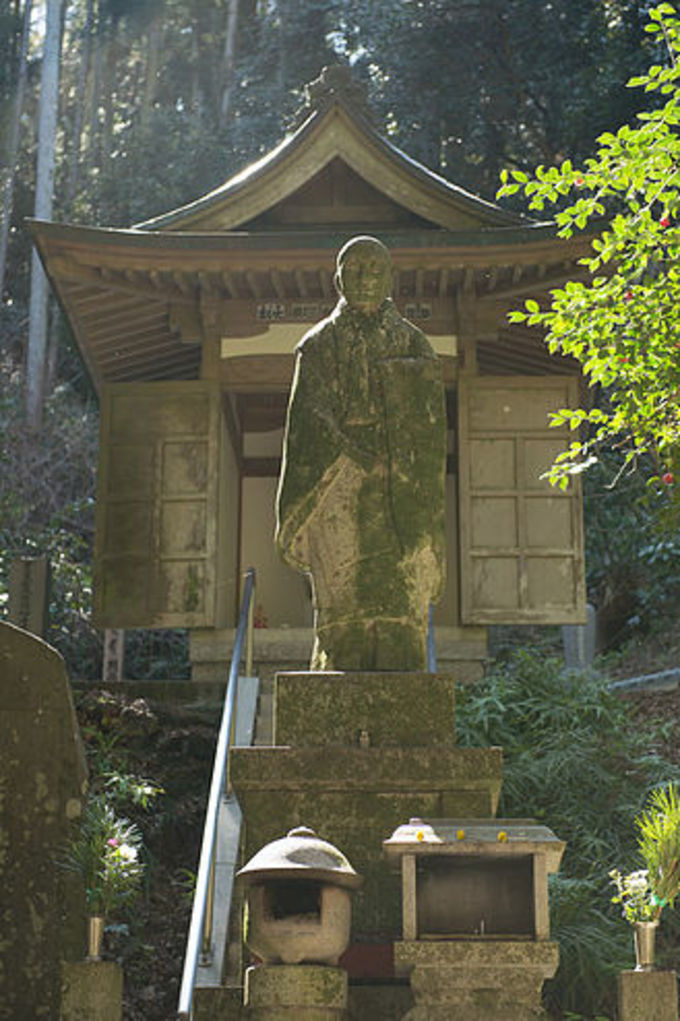
Owari Koyasan Matsui Gotetsu Daisojo (Hisashi Kamito), the first president of the country, was born in the present Nagoya city. His house was a masterpiece of the flow of Seiwa-Genji, but since he was serving the Owari Tokugawa family, he returned home due to the clan site of the Meiji Restoration. He was as gentle, temperate, brainclarity as a child, but he lost his father at the age of four and was raised affectionately by his mother although he was poor. When he was nine years old, he entrusted Murase with a profound grasp and enthusiastically attended.
Both Higashi Koji and Kyoikuji, who had Jinshan before I moved to Iwayaji, revived the main hall and newly built and repaired the shrine and got a charismatic popularity such as gathering over 1,000 convicts besides the dancer.
He worked on the maintenance of Karan without declining even after I moved to Iwayaji, and in April 1954, he became Independent Buddhism as Owari Koyasan Iwayaji. It is the founder of Owari Koyasan who spreading the fruit of propagation nationwide and having served more than 20 temples.
Transition to January 4, 1980
Guidance
Okunoin

Kobo-Daishi, who landed in the Chita peninsula in 814, carried out a 100-day Goma training at the site of Iwaya here.
Even now Iwayaji carries out Goma-Hoyo at this place on the 17th of every month.
Okunoin, many of whom visit for pilgrimage as a substitute Kobo Daishi, is a 3-minute walk from Iwayaji Main Hall.
(Although there are limitations on the number, parking lots are available)
Kyozo
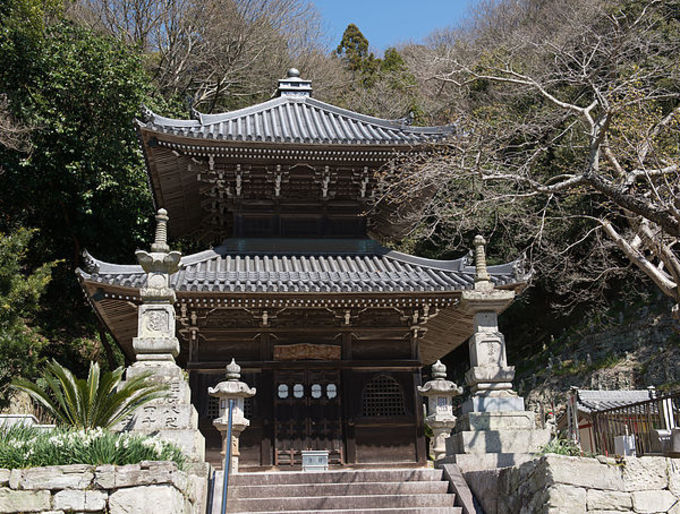
It is a building of sankenyomen of tiled double-layer grouper, in total zelkova construction.
The current kyozo started construction in 1799 and it was completed two years later.
The internal rinzo was built in 1812 and completed in three years.
Construction cost of kyozo built over about 15 years passed from 800 to 1 thousand ryo.
Bell tower
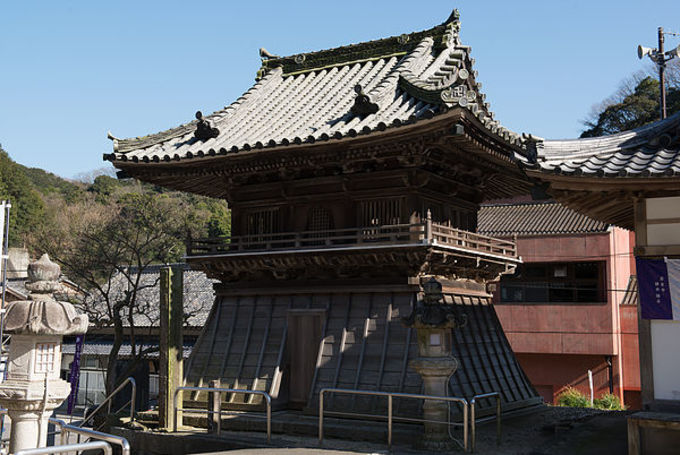
It is said that it was originally a four-story bell tower, but it was destroyed by the fire in 1697. After that, hanging at the eaves end of the main hall for a long time, it was rebuilt in 1753.
It has a rare shape of rectangle in total zelkova construction.
It is built with extremely difficult building methods, such as very fine fan rafters.
Statues of the 500 Rakans
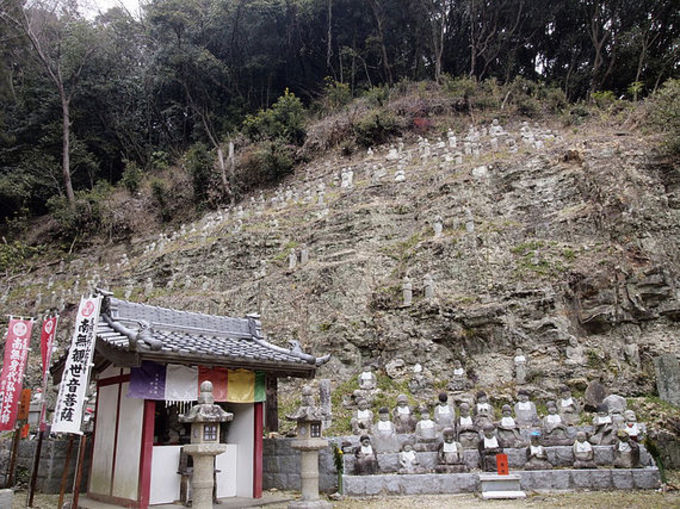
In 1820, they were opened by Gocho-Risshi who was our priest.
As time goes on, they are weathered, but each one is a Rakan statue with individuality.
They are said to be works of the stonemason named Genkichi.
Kasamori Shrine

Kasamori Shrine, which has been seceded alongside kyozo, was originally placed in Kasamori in Joshu (in the vicinity of the present Gumma Prefecture).
However, when a villager named Yamamoto Sukezaemon of former Yamami Village visited the place, his eye disease healed and he ensured it at home Taninobo after returning.
Many pilgrims visited there, but after the death of Sukezaemon, it was decided to be enshrined to Iwayaji by the wishes of neighboring people.
In recent years it has been evaluated as a shrine to the god of marriage, and many visit for worship.
Access
〒470-3322
Aichi Prefecture Chita-gun Minamichita-cho Yamamimaso 109
Owari Koyasan head office Iwayaji
TEL: 0569-62-0387 (temple office)
15 minutes from Ko IC on Minamichita Road
*Large parking lot available
For the visitors by public transport
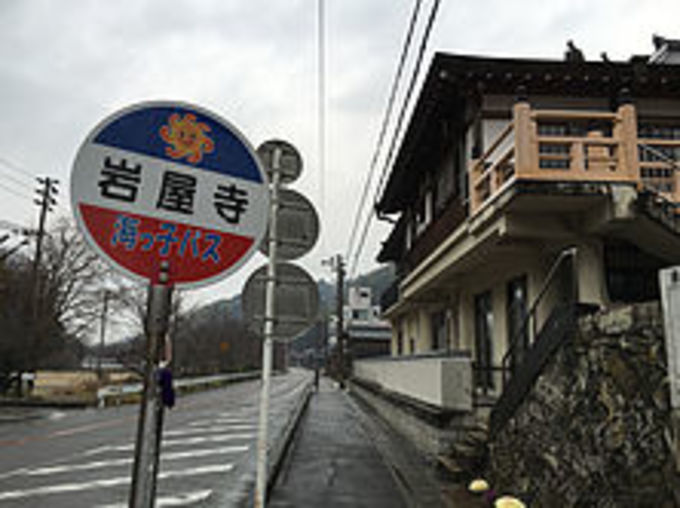
Nagoya Railway Chita Shin Line from Utsumi Station Umikko bus
25 minutes on foot from the Nishi Kaigan Line Matsubara stop
(It will stop at Iwayaji temple according to the time periods.)
For the visitors by road bike
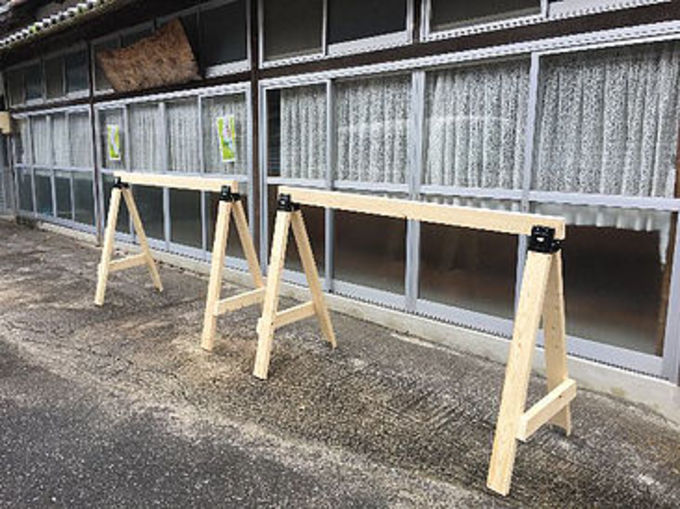
At Iwayaji, we set up a motorbike stand so that everyone enjoying Chita Ride such as Chitaichi (around Chita) will feel free to come.
There are many places to eat in Minamichita Town and you can enjoy various routes.
Please stop by all means.
